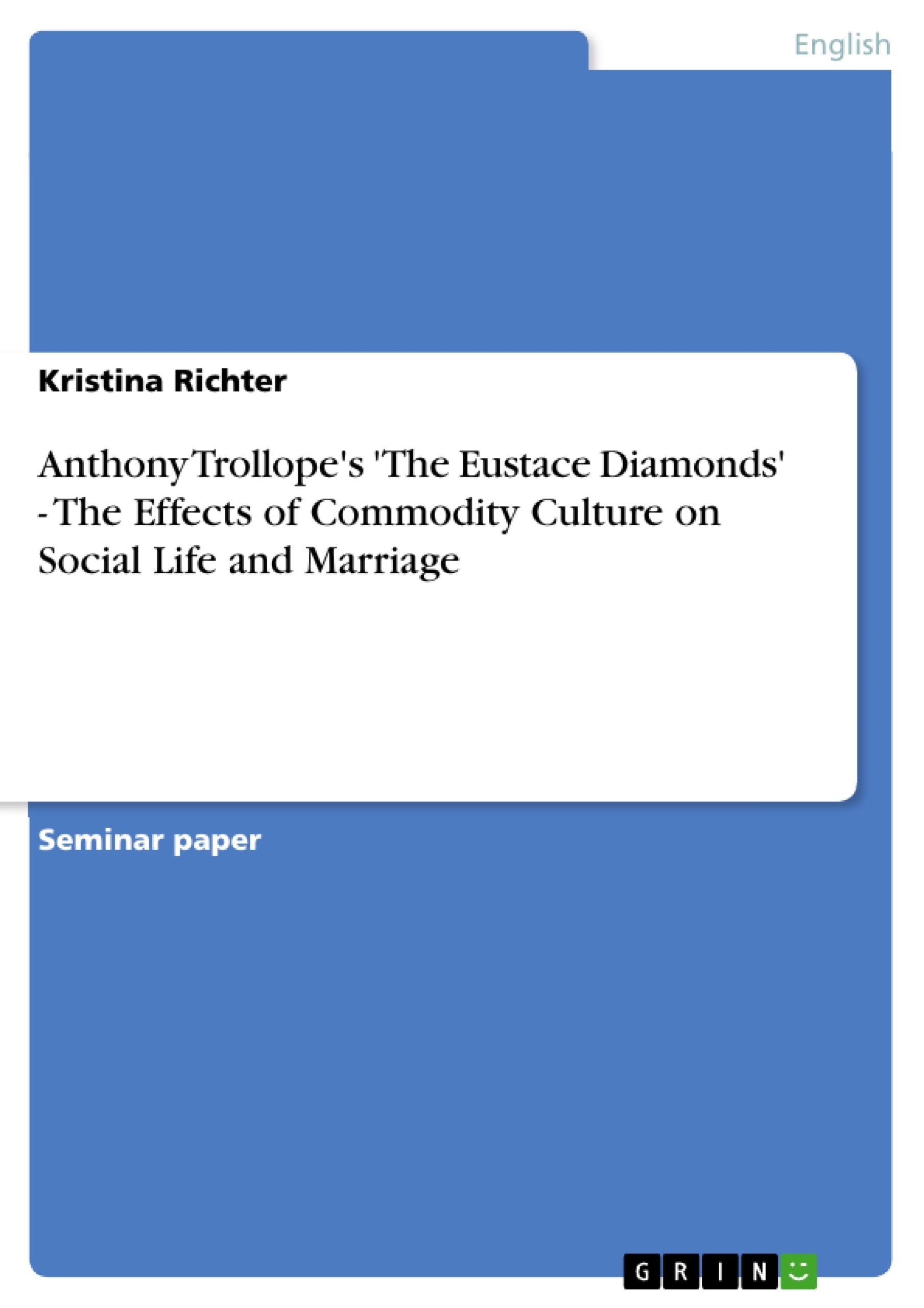1. Introduction
Anthony Trollope, together with his works, gives us a typical example of Victorian commodity culture which he himself recognised by comparing himself with shoemakers, carpenters and other production workers. He saw writing novels as satisfying the demands of the consumers (the readers of his novels) and generation of products (his books) for the market. After his death, Trollope's autobiography was published, after which his reputation suffered a lot because people found out that he worked after a strict production schedule and, furthermore, he admitted that he wrote for money. He also called the dislike of money false and misplaced. Other writers criticised his point of view because they claimed that a true writer should not be concerned with money. Trollope, however, maintained accounting books in which he noted the number of pages he wrote, how many pages he wrote per hour etc. He saw himself as a producer of “marketable commodities” and a typical example of this is his novel The Eustace Diamonds, which is itself a satirical representation of the circulation of commodities. In the novel, the character of Lizzie Eustace, a young widow, refuses to return a precious diamond necklace given to her by her late husband to his family, who claims it is a family heirloom and, therefore, part of their property. She tries everything she can to keep the diamonds, from faking a theft of the diamonds to trying to persuade and even blackmail several men into marrying her and, thus, protecting her from the law. She even commits perjury after the real theft of the diamonds. What follows is an account of the legal debate about whether the necklace is an heirloom or paraphernalia and the social activity connected to the debate, which is stimulated by desires, intrigues and social exchange. And it is not only the necklace that is considered as part of the circulation of commodities in the novel, but the women who are eligible for marriage are also treated in the same way. Those are Lizzie, Lucy and Lucinda – their similar names already suggest that they represent three aspects of the same topic, which is the commodification of women in the marriage market.
Inhaltsverzeichnis (Table of Contents)
- Introduction
- The Mercenary Marriage
- Women as Commodities
- Lucy Morris
- Lucinda Roanoke
- Lizzie Eustace
- Mercenary Marriage for Men
- Frank Greystock
- Lord Fawn
- Society and Consumerism
- Gift - Exchange
- The Heirloom Question
- Women as Paraphernalia and Heirlooms
Zielsetzung und Themenschwerpunkte (Objectives and Key Themes)
This paper aims to analyze Anthony Trollope's novel The Eustace Diamonds to demonstrate the impact of Victorian commodity culture on social life and marriage. The author highlights the representation of marriage as a market transaction where women are commodified and traded for wealth and status. The paper will explore how women are portrayed as commodities in the marriage market and analyze the role of men within this system.
- Commodification of women in the marriage market
- Mercenary nature of marriage in Victorian society
- Influence of consumerism on social interactions and marriage
- The significance of the heirloom question in understanding commodity culture
- The impact of wealth and status on marital choices
Zusammenfassung der Kapitel (Chapter Summaries)
The first chapter introduces the concept of commodity culture in Victorian England, using Trollope's own views on writing as a commodity. It then focuses on the character of Lizzie Eustace, who refuses to return a diamond necklace, demonstrating the circulation of commodities and their influence on social life.
Chapter 2 explores the theme of mercenary marriage, comparing it to a market where women are sold or trade themselves for the highest bidder. It examines the economic factors involved in marriage, including the lack of women's ownership rights and the importance of wealth in securing a favorable match.
Chapter 3 delves into the representation of women as commodities in The Eustace Diamonds. It analyzes the characters of Lizzie, Lucy, and Lucinda, highlighting their different experiences and expectations within the marriage market.
Chapter 4 focuses on the role of men in the marriage market. It examines the perspectives of Frank Greystock and Lord Fawn, showcasing their motivations and strategies in their pursuit of marriage.
Chapter 5 explores the impact of consumerism on Victorian society, focusing on the concept of gift exchange as a key aspect of commodity culture. It analyzes how this exchange system influences relationships and social interactions.
Chapter 6 delves into the significance of the heirloom question, examining how women are viewed as paraphernalia and heirlooms in the context of commodity culture. It explores the implications of this perspective on women's agency and value.
Schlüsselwörter (Keywords)
Key terms and concepts explored in this work include Victorian commodity culture, marriage as a market transaction, commodification of women, mercenary marriage, consumerism, gift exchange, heirloom question, and women as commodities.
- Quote paper
- Kristina Richter (Author), 2005, Anthony Trollope's 'The Eustace Diamonds' - The Effects of Commodity Culture on Social Life and Marriage, Munich, GRIN Verlag, https://www.grin.com/document/166039



